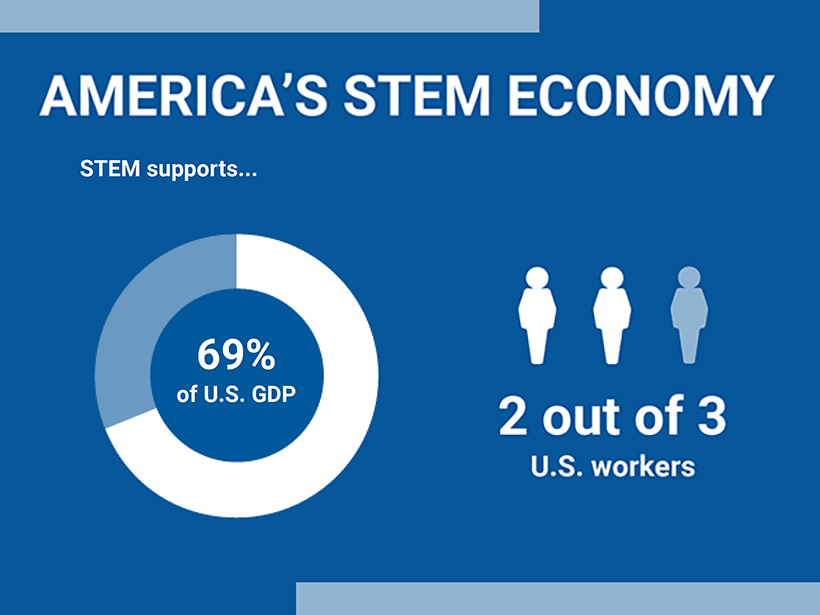With the 2020 campaign a key focus in the United States, AGU joined nine U.S. scientific and engineering associations, university organizations, and industry organizations to analyze the critical role that the science, technology, engineering, and mathematics (STEM) fields play in the U.S. economy.
Science organizations such as ours have long been working together to lead new generations down the path to careers in these fields, such as designing targeted informational programs that identify both traditional and alternative STEM careers and the critical skills students should learn to pursue each one. This new report, “STEM and the American Workforce,” shows that not only are these jobs flourishing in our economy, they are attainable by an increasingly large percentage of the population.
These are some of the key findings from the analysis conducted by FTI Consulting.
STEM is the Economy’s Engine
First and foremost, STEM powers the U.S. economy. Sixty-seven percent of U.S. jobs and 69% of the nation’s GDP (gross domestic product) are supported by STEM, with direct STEM jobs accounting for 33% of the economy. Additionally, STEM is the primary U.S. economic driver and produces $2.3 trillion in federal tax revenue annually.
Federal support for science has a tremendous return on investment. Science improves our ability to understand, adapt to, and even predict the impacts of natural hazards and climate change, and the federal investment benefits communities and taxpayers directly by protecting lives, property, and economic interests.

Highly Skilled STEM Careers Are One Third of U.S. Occupations
The analysis reviewed 819 occupations as defined by the Bureau of Labor Statistics and aggregated data using the IMPLAN (Impact Analysis for Planning) model. Of the 195.8 million jobs identified across these 819 occupations, 64 million, or 33%, were high-skilled STEM professions. Because the model used a conservative analysis, it’s likely that the number of STEM-supported occupations is actually higher.
No College Required: Alternative STEM Fields Are Flourishing
The analysis also found that STEM jobs fall outside the bounds of common perceptions. For example, although people who study hurricanes or design satellites undoubtedly have STEM skills, there are many other STEM-based jobs that go unnoticed, such as air traffic controllers, crane operators, maintenance crew, and even tax preparers. In fact, 59% of Americans in STEM jobs in every segment of our economy do not hold bachelor’s degrees.
This number demonstrates how attainable it can be to pursue a career in the STEM workforce and to promote a more diverse and inclusive STEM pipeline.
In the lead up to the 2020 U.S. presidential elections, it’s crucial that we continue our support of all researchers, STEM workers, and the global scientific enterprise. AGU encourages our members and the broader scientific community to engage candidates to make science a part of their campaigns and urge elected officials to champion science and its funding.
—Chris McEntee ([email protected]), Executive Director/CEO, AGU
Citation:
McEntee, C. (2020), STEM supports 67% of U.S. jobs, Eos, 101, https://doi.org/10.1029/2020EO139416. Published on 28 January 2020.
Text © 2020. AGU. CC BY-NC-ND 3.0
Except where otherwise noted, images are subject to copyright. Any reuse without express permission from the copyright owner is prohibited.

